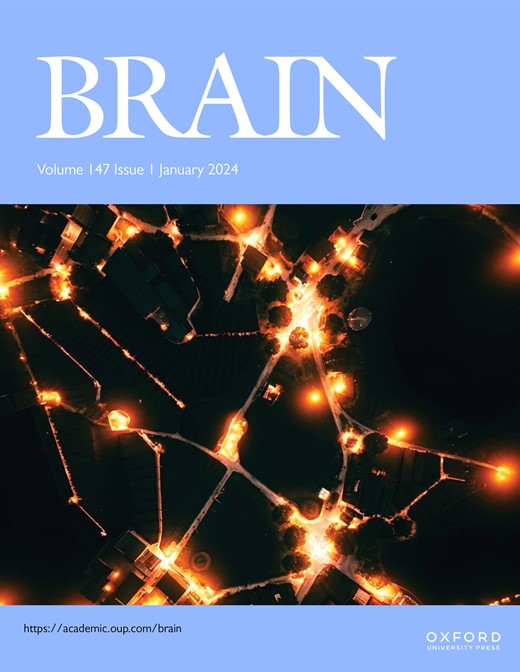Myopathic aggregation-prone variants in the TDP-43 prion-like domain: genetics paving the way
IF 10.6
1区 医学
Q1 CLINICAL NEUROLOGY
引用次数: 0
Abstract
While neuropathological and genetic studies have established the crucial involvement of TDP-43 proteinopathy in the pathogenesis of ALS (Amyotrophic Lateral Sclerosis), FTD (Frontotemporal Dementia) and related neurodegenerative disorders, multiple studies have described the presence of TDP-43 inclusions in muscular disorders, including inclusion body myositis but also other related rimmed vacuole myopathies. In addition, TDP-43 has been reported to be essential in normal muscle physiology as it is implicated in the formation of so-called amyloid-like myogranules during normal muscle regeneration after injury. However, genetic evidence supporting a primary role for TDP-43 proteinopathy in muscle disease has been missing. In the present review we highlight recent landmark discoveries linking novel pathogenic TDP-43 variants [p.(W385IfsX10) and p.(G376V)] within the prion-like domain with unusual aggregation-propensity and muscle rather than neuronal pathology. We discuss these studies in the context of known TDP-43-related pathways in ALS/FTD pathogenesis and show how they challenge some widely accepted views such as ALS as a pure neurogenic presynaptic neuromuscular disease and the direct correlation between TDP-43 aggregation-propensity and neurotoxicity. Finally, we discuss TDP-43 as part of a growing list of RNA-binding proteins including hnRNPA2B1 and hnRNPA1 as genetic causes of myopathies and relate this to the idea of ‘multisystem proteinopathy’.求助全文
约1分钟内获得全文
求助全文
来源期刊

Brain
医学-临床神经学
CiteScore
20.30
自引率
4.10%
发文量
458
审稿时长
3-6 weeks
期刊介绍:
Brain, a journal focused on clinical neurology and translational neuroscience, has been publishing landmark papers since 1878. The journal aims to expand its scope by including studies that shed light on disease mechanisms and conducting innovative clinical trials for brain disorders. With a wide range of topics covered, the Editorial Board represents the international readership and diverse coverage of the journal. Accepted articles are promptly posted online, typically within a few weeks of acceptance. As of 2022, Brain holds an impressive impact factor of 14.5, according to the Journal Citation Reports.
 求助内容:
求助内容: 应助结果提醒方式:
应助结果提醒方式:


